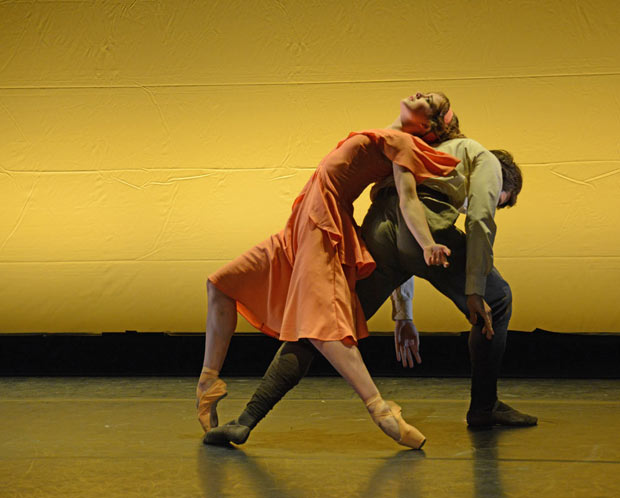
© Dave Morgan. (Click image for larger version)
English National Ballet
Choreographics 2014: Ripple Effect, We Are Free, In Living memory…, Vera
London, Barbican, The Pit
22 May 2014
Gallery of pictures by Dave Morgan
www.ballet.org.uk
www.barbican.org.uk
Once a year English National Ballet do a full-on job of investing in their young dancer-choreographers – they get a chance to work with a composer to generate a custom score, the mentorship of Kerry Nicholls and a dollop of money for special costumes to set it all off. It’s a step on from what you normally see at in-house choreographic shows and for those who navigate the process it seems to create original work with a clear sense of direction – rather than just resulting, as can often be the case, in another hastily created work about troubled relationships complete with grungy accoutrements.
This year all the choreographers had to create pieces inspired by the First World War, Bruce Wall coming in to help structure thoughts by getting the choreographers to select a WW1 poem to explore choreographically, and which the composers explored musically, first creating a song of the words (to piano accompaniment) and then the music for the ballet itself. There’s a lot of collaboration going on when you add in the mentorship of Nicholls, working with the costume designer, having to convince some of your colleagues to dance for you and also liaise with George Williamson (ENB Associate Artist) who oversees the whole caboodle. It’s not a process for everybody, and one of the ENB choreographers sidestepped the composer part by using an existing work and I know of another, involved last year, who dropped out of this year’s Choreographics entirely (for unknown reasons) – a shame because I really rated what they did earlier.
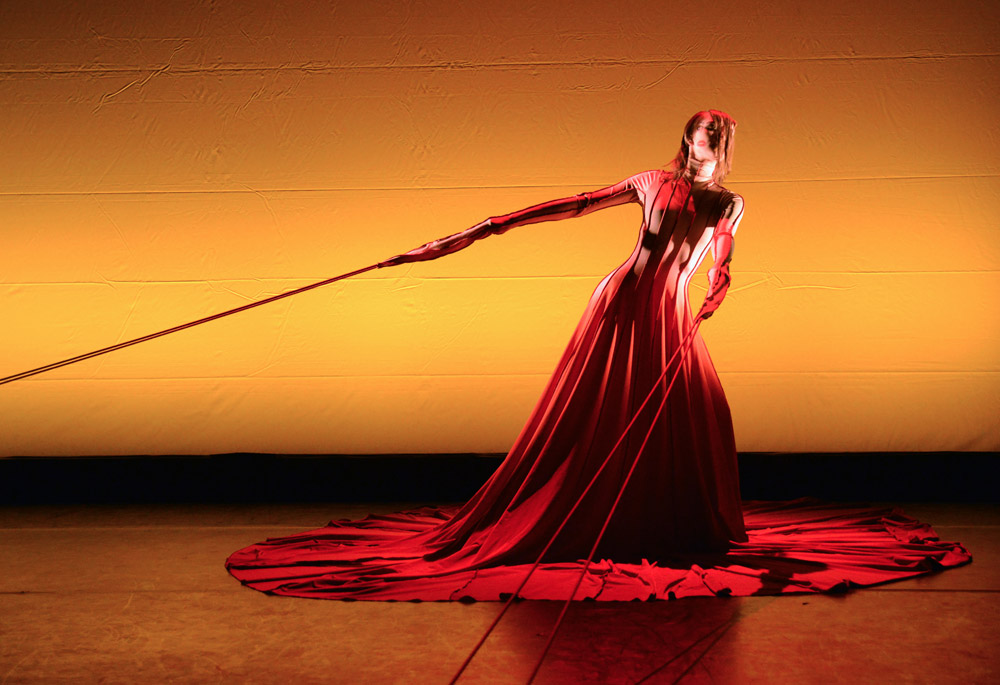
© Dave Morgan. (Click image for larger version)
Before each piece there was a short video shown (shot well by dancer Laurent Liotardo) in which the choreographer explained what the piece was trying to show. Rather than off-the-cuff words these were really thought about and clearly communicated, with none of the fluster of doing it live. They often provided good help in navigating the piece itself. The cast sheet also generally had sensible words by each choreographer – no talking in riddles allowed here, thank goodness. After the video came the song with piano accompaniment to set the scene further. This didn’t work for me because I couldn’t hear the words clearly enough. It would have been really useful to know ahead of the event that there would be no programmes available on the night, but you could download one (as a pdf), and thus print your own, and that had the poem/song words included.
This year there were four rather than five ENB choreographers involved, plus the ENB School Choreographic Competition winner, who, as last year, was Emmeline Jansen with a short but confident piece of spiky work inspired by Wayne McGregor. Overall the ENB four turned in good pieces and I’m pleased to say that nobody had a car crash. I found individual merits in them all, if no one piece totally swept me off my feet, as happened in last years Choreographics, held at The Place.
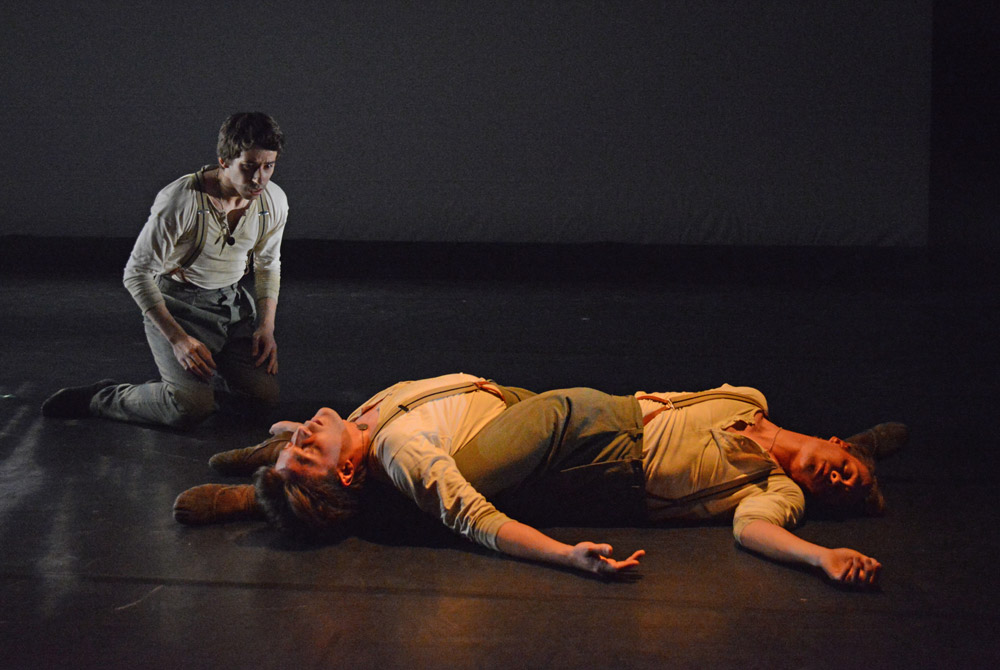
© Dave Morgan. (Click image for larger version)
Ripple Effect by Makoto Nakamura was probably structured the best and had the clearest story just from observing the action. Three men go to war, two die in the fighting leaving one to grieve for his comrades, and even when home to be un-forgetting of the horror no matter what his wife does to console him. Guilherme Menezes and Ksenia Ovsyanick are at the core of the piece (as the survivor and wife) and turned in splendid dramatic performances, and the end was particularly effective, with her sagging to her haunches at the realisation she could do nothing to recover him.
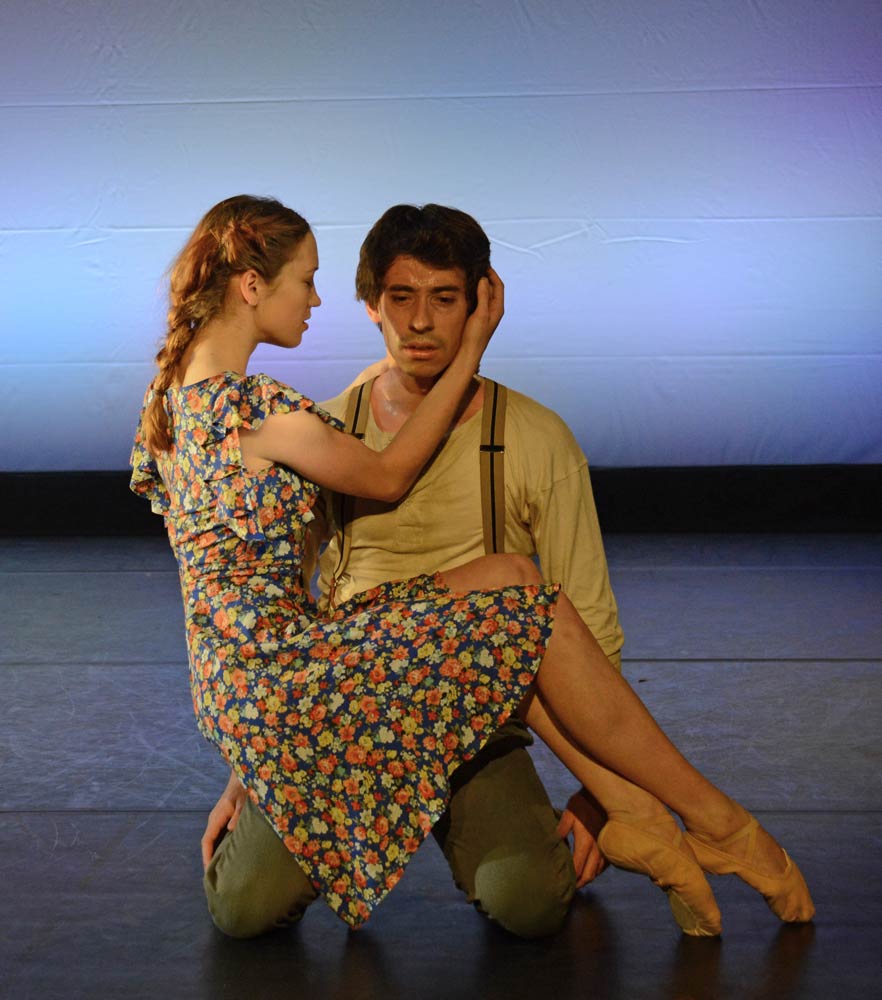
© Dave Morgan. (Click image for larger version)
Nakamura produces movement of great classical beauty – there is no ugliness here, even in death or the showing of a troubled mind. It reminded me of some of the things that Alex Whitley and Liam Scarlett are doing with ballet dancers – the phase of younger choreographers feeling they have to include Wayne McGregor ‘distortions’ is passing. Nakamura often relies on his dancers for dramatic punch and amidst the beauty I wanted to see some more expressively dark movement as well. But overall this was a step up from last year’s piece (also about death as it happens) and if I could select only one piece for comprehensively covering the war, and its legacy, this would be it.

© Dave Morgan. (Click image for larger version)
Last year I rather gave up on Fabian Reimair’s piece (the impossibly-named [co][hes][ion]) but this year, with We Are Free, he really grabbed all our attentions with interesting design (Antonella Petraccaro) and clever telling of the bigger WW1 story – that we might fight as individuals but it’s society overall that goes to war. Its big conceit was to show the weight of that society and the nation as a kind of Britannia figure with arms stretching out as ropes to touch us all. The work starts before the war with the pastoral capering of young men and woman but slowly the ropes of the nation and fate surround the men and they are off to war, supported by their women. The ropes sadly don’t always make for easy dancing and there is a confused central section of fighting before the ballet ends, rather cleverly, with nation, soldiers and womanfolk all trapped in their own ropes and incapable of fighting more. War goes nowhere. I loved the central theatrical idea, if the realisation made the movement not so memorable.

© Dave Morgan. (Click image for larger version)
James Streeter’s In Living memory… is centred on the flashback memories of a dying man – Nathan Young at front of stage. James Forbat is his dream self and Erina Takahashi his woman. It’s really an extended pas de deux for Forbat and Takahashi – expressively MacMillanesque and the first time we see a pointe shoe in the evening. It was also the first time I really noticed the music in a work – sorry composers. Christopher Hamilton has produced a hugely melancholic score that really emphasised what Streeter was about and vice versa.

© Dave Morgan. (Click image for larger version)
In Living memory… was also a reminder of how expressive Takahashi is, both technically and dramatically when seen so close. But having Forbat and Young stripped to the waist and looking yummy as hell for some in the audience, seemed rather gratuitous and unnecessary.

© Dave Morgan. (Click image for larger version)
Vera Brittain’s book Testament of Youth had a big impact on many of us when it was serialised on the BBC in the late 70’s. We were all familiar with grainy film of WW1 soldiering but this showed the huge impact on those at home of a lost generation. Good to see Stina Quagebeur discovering Brittain’s story and her Vera mines it well. Nancy Osbaldeston is Vera and Guilherme Menezes the ghost of her fiancé, seemingly ever there to help her get through the grief but wanting her to move on. Quagebeur selected 3 piano works by Ivor Gurney, works contemporary with the period, and like Brittain, Gurney too struggled with the pain and loss of the war. The piano works, used as recordings, fitted like a glove and open with Longing (excerpt, from www.prestoclassical.co.uk)- poignant and gentle. In her introductory video Quagebeur broke the piece down into 3 sections for us and you really do see them: despair/wanting to move on, questioning/railing at why it has happened and then slowly having to find life again. Quagebeur’s movement is expressive and gently contemporary – it drifts dreamily by and the character is beautifully realised by Osbaldeston. Fans have been lamenting Osbaldeston’s decision to leave ENB for the Royal Ballet of Flanders and this really underlined what a loss of dramatic potential it will be for the company. Congratulations to Stina Quagebeur for bringing all aspects together and this was the best piece of the evening. With everybody noting the relative lack of female choreographers in ballet it’s good to see one doing so well and with a female subject to boot.
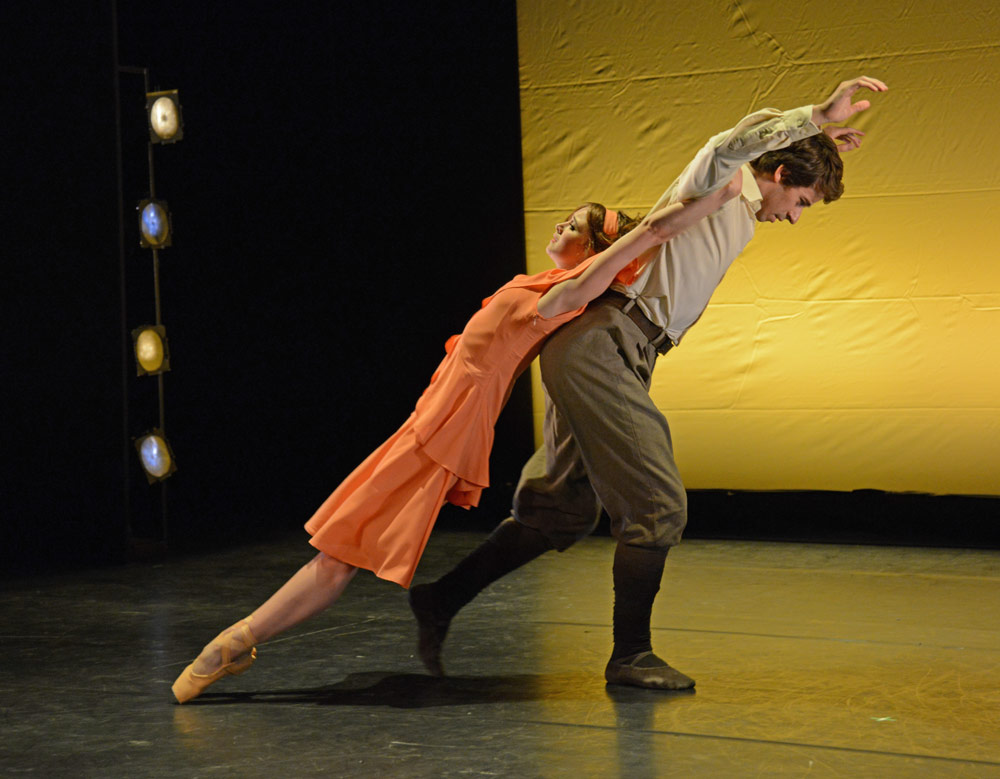
© Dave Morgan. (Click image for larger version)
All up this was a solid night and a good complement to ENB’s Lest We Forget (WW1) bill that was so recently on the main Barbican stage. But I hope that next year they return to a more open choice on what choreographers can do and also concentrate on choreography rather than include musical soiree interludes. Wonderful, though, to have composers commissioned – don’t get me wrong. As Tamara Rojo said in introducing the night, “Creation and risk taking is an expensive hobby of ours” and good that despite the costs ENB make it happen at such an exemplary level.












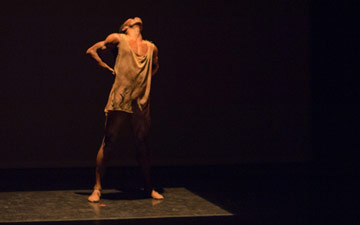

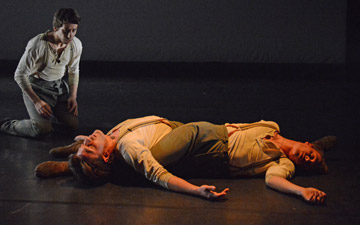
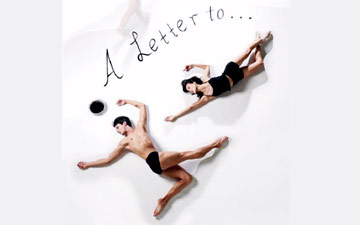

Ksenia Ovsyanick ever beautiful, ever perfect